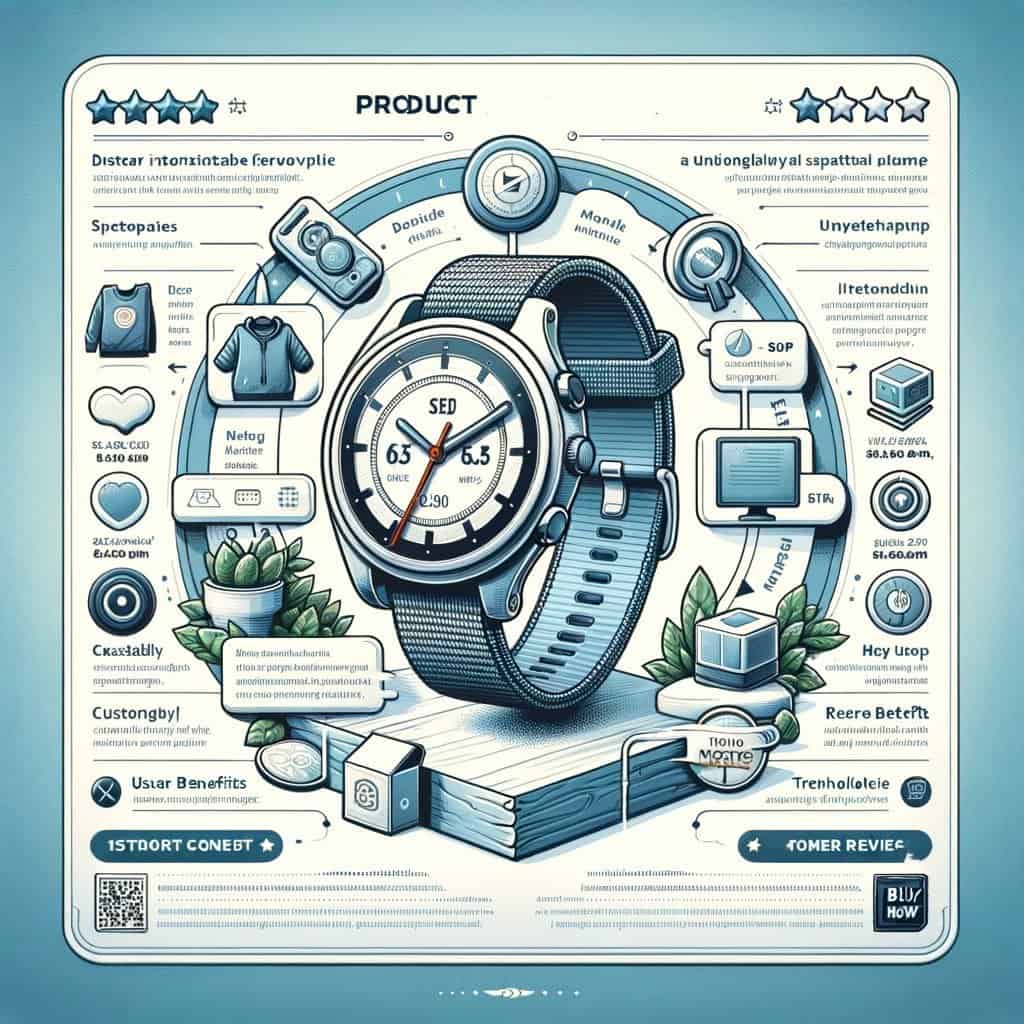
- How to Write Product Descriptions That Sell: The Female Entrepreneur’s Playbook
- Introduction
- Understanding Your Audience
- The Essentials of a Winning Product Description That Sell
- SEO Strategies for Product Descriptions that Sell
- Brand Voice
- Formatting for Success to Make Sure You Have Product Descriptions That Sell
- Encouraging Action: The Art of the CTA
- Measuring and Tweaking Your Descriptions
- Conclusion on Product Descriptions That Sell
How to Write Product Descriptions That Sell: The Female Entrepreneur’s Playbook
Whether you’re just starting out or you’re looking to give your online shop a bit of a boost, you’re in the perfect spot. art of writing product descriptions is key to turning browsers into buyers.
Your product descriptions are your secret weapon to grab attention, charm your customers, and, of course, boost those sales.
How you can create product descriptions that sell, and reflect your unique brand voice? Here’s your go-to guide, packed with SEO-friendly tips to get your products noticed.
Introduction
With online shopping, standing out is key, and how you talk about your products can make all the difference.
But here’s the kicker – it’s not just about making your products sound amazing (though that’s pretty important too!). It’s also about making sure people can actually find your products in the first place.
That’s where SEO, or search engine optimisation, comes into play. By weaving SEO-friendly keywords and phrases into your product descriptions, you can help your lovely items show up in search results, right where your future customers can see them.
So, why are persuasive and SEO-optimised product descriptions so crucial for your e-commerce success? Well, they do a few fabulous things:
- Attract more visitors: By ranking higher in search results, more people can find your shop.
- Engage your audience: Captivating descriptions keeps people interested and makes them more likely to buy.
- Highlight what makes you special: You get to show off what sets your products apart from the crowd.
- Encourage action: Great descriptions don’t just inform; they inspire people to hit that ‘buy’ button.
In short, top-notch product descriptions are about drawing people in and giving them all the reasons they need to choose you.
As we dive deeper, we’ll explore how you can craft descriptions that are search-engine friendly, and packed with personality and persuasion.
Ready to give your products the spotlight they deserve? Let’s get started!
Understanding Your Audience

Before you start penning those product descriptions, there’s a golden nugget of marketing wisdom to embrace: knowing your audience. It’s like setting up a tea party.
You wouldn’t serve an Earl Grey to a mate who’s all about peppermint tea, right? Let’s get into how you can figure out who’s coming to your party and what tea they’d like.
Identifying Your Ideal Customer
First up, let’s chat about finding out who you’re selling to. This isn’t about guesswork; it’s about getting down to the nitty-gritty of who your customers really are. Here’s how to start:
- Look at Your Current Customers: Who’s already buying from you? Spotting common threads can give you a clue into your broader audience.
- Check Out the Competition: Who are your competitors targeting? There’s a good chance their audience might overlap with yours.
- Analyse Your Product: What problems does your product solve? The answer can help you identify who’s likely to need it.
Understanding your ideal customer is about narrowing down your audience to those who are most likely to be interested in what you’re selling. It’s the difference between casting a wide net in the ocean and fishing in a pond stocked with your favourite fish.
Using Buyer Personas
Now, for the fun part – buyer personas. These are like character bios for your ideal customers, and they help you personalise your marketing efforts. Here’s how you can craft your own:
- Demographics: Start with the basics like age, gender, location, and income level. It sets the foundation.
- Interests and Hobbies: What do they like to do in their spare time? Understanding this can help you connect on a personal level.
- Challenges and Pain Points: What keeps them up at night? Knowing their challenges can show you how to position your product as a solution.
- Shopping Habits: How do they like to shop? Online, in-store, late at night, or early in the morning? This helps you understand how to reach them.
Creating a few buyer personas can really fine-tune your marketing strategy. It’s like having a cheat sheet that tells you exactly who you’re talking to and what they want to hear.
The Essentials of a Winning Product Description That Sell

Crafting a product description that turns heads and opens wallets isn’t just about listing what your product does. It’s about painting a picture that makes your customer think, “Blimey, I need this in my life!” Let’s break down the essentials of creating product descriptions that not only inform but also enchant and persuade.
Highlighting Key Features
First things first, let’s talk features. These are the bread and butter of your product description, but there’s a knack to picking and presenting them:
- Pick the Right Features: Think about what makes your product stand out. Is it handcrafted? Is it made from eco-friendly materials? Does it have a feature that no one else offers? Focus on the features that matter most to your ideal customer.
- Showcase Wisely: Instead of bombarding your readers with every single feature, highlight the ones that truly make a difference. Use bullet points for clarity and focus on the features that address your customers’ needs and pain points.
Transforming Features into Benefits
Now, for the magic part – turning those features into benefits. This is where you get to tell your customers what’s in it for them:
- Speak Their Language: Translate technical specs into everyday benefits. For instance, instead of saying “water-resistant up to 30 meters,” you might say, “You can take this watch swimming and not worry about a splash ruining your style.”
- Focus on Solutions: Every feature you mention should answer a potential question or solve a problem for your customer. If your product has a super long battery life, highlight how it keeps them connected or entertained for longer without the hassle of constant recharging.
Emotional Engagement
And here’s the secret ingredient – emotion. People make purchasing decisions based on how they feel, so your product descriptions need to tap into those feelings:
- Use Emotive Language: Words can evoke feelings, so choose yours carefully. Describe how cozy and warm your handmade blankets are, or how your skincare range makes skin feel baby-soft.
- Tell a Story: Use mini-stories or scenarios that help customers imagine using and enjoying your product. For a coffee machine, paint a picture of the perfect, hassle-free morning brew that starts their day right.
- Address Desires: Think about what your customers really want – is it to save time? To feel luxurious? To make sustainable choices? Show how your product ticks those boxes.
Writing product descriptions that sell is an art. It’s about balancing clear, informative content with persuasive, emotionally engaging language.
By highlighting key features, transforming them into relatable benefits, and connecting with your customers on an emotional level, you’re not just selling a product; you’re offering a solution, a lifestyle, and an experience.
So, grab your keyboard and start crafting descriptions that will make your customers think, “Yes, that’s exactly what I’ve been looking for!”
SEO Strategies for Product Descriptions that Sell
Alright, lovely folks, let’s get down to the nitty-gritty of making your products not just sparkle but also easy to find online. SEO, or Search Engine Optimisation, is your best mate here.
It’s all about making sure when someone’s searching for something you sell, your products pop up front and centre. Let’s dive into some top tips for using SEO in your product descriptions.
Keyword Research: Finding the Right Words
Before anything else, you need to know what words people are using when they’re looking for products like yours. This is where keyword research comes in:
- Use Keyword Tools: Tools like Google’s Keyword Planner can help you find the right keywords by showing you what people are searching for and how competitive those keywords are.
- Think Like Your Customer: Put yourself in your customers’ shoes. What would you type into Google if you were looking for your product?
- Long-Tail Keywords: Don’t just stick to single words; think about phrases or questions people might use. These are called long-tail keywords and can really help you target the right folks.
Incorporating Keywords Naturally
Once you’ve got your list of golden keywords, it’s time to sprinkle them into your product descriptions. But remember, it’s a sprinkle, not a dump:
- Keep It Natural: Your keywords should fit into your descriptions smoothly. Reading your copy aloud can help make sure it still sounds like normal human speech.
- First 100 Words: Try to get your main keyword into the first 100 words of your description. It’s a sweet spot for SEO.
- Don’t Overdo It: Keyword stuffing, or cramming too many keywords into your text, can actually harm your SEO. Keep it balanced.
Optimising for Voice Search
With more people using voice-activated devices like Siri and Alexa to search online, optimising for voice search is becoming super important:
- Conversational Keywords: Voice searches tend to be more like natural speech. Including conversational phrases and questions in your descriptions can help you show up in these searches.
- Answer Questions: Think about the questions someone might ask aloud about your product and try to answer them in your descriptions.
- Local SEO: If you’re targeting local customers, including local keywords can help your products show up in voice searches too, like “where can I buy handmade candles in Manchester?”
Getting your head around SEO for your product descriptions might seem like a lot, but once you start seeing your products climbing up those search rankings, it’ll all feel worth it.
It’s about finding the right keywords, using them naturally, and thinking about how people search out loud. Keep it simple, keep it natural, and watch your visibility soar. Happy SEO-ing!
Brand Voice

Alright, fabulous lady entrepreneurs, let’s chat about something close to my heart: your brand’s voice. Imagine walking into a room full of people.
Everyone’s chatting, but there’s that one voice that makes you stop and listen. That’s what your brand voice should do in the bustling online marketplace. And more importantly so that you are creating product descriptions that sell.
Defining Your Brand Voice
Creating a voice for your brand is like picking the perfect outfit for a first date. You want to show off your best bits, feel comfy, and most importantly, be yourself.
- Mirror Your Brand’s Personality: First up, think about your brand’s personality. If your brand were a person, what would they be like? Friendly and chatty? Or more like the wise old owl full of wisdom? Your brand voice should reflect this personality.
- Consistency is Key: Just like you wouldn’t change your accent mid-sentence, your brand voice should be consistent across all your content. Whether it’s a tweet, a product description, or an email, make sure it sounds like it’s coming from the same place.
- Reflect Your Values: Your brand values are your North Star. Let them guide your voice. If sustainability is a core value, your voice might be passionate and informative, always focusing on educating and inspiring.
Using Your Voice to Stand Out
In a world where everyone’s shouting for attention, your brand voice can be your secret weapon to cut through the noise.
- Be Unapologetically You: The best way to stand out? Be yourself. There’s only one you, and there’s only one brand like yours. Embrace what makes you different, and let it shine through your voice.
- Speak Directly to Your Audience: Imagine you’re having a one-on-one chat with your ideal customer. How would you talk to them? Use that same tone in your writing to create a sense of intimacy and connection.
- Tell Your Story: People love a good story. Use your unique brand voice to tell yours. How did your business come to be? What challenges have you faced? Sharing these stories can make your brand more relatable and memorable.
Let the world hear what you’ve got to say. It’s not always the loudest voice that gets heard, but the most distinctive. Let’s make yours count!
Formatting for Success to Make Sure You Have Product Descriptions That Sell
Alright, lovely people, let’s talk about jazzing up your online content. It’s not just what you say; it’s how you present it that counts. Just like a beautifully set table can make a meal look even more appetising, the way you format your content can make it more appealing to your readers. Let’s break down how you can format your content for success.
Breaking Up Text for Readability
Ever landed on a webpage only to be greeted by a massive wall of text? Daunting, isn’t it? Your eyes don’t know where to start, and your brain is already thinking about checking social media instead. Here’s how you can avoid being that webpage:
- Love Your Bullet Points: They’re not just for grocery lists. Bullet points can help break up information into digestible bits. Whether it’s listing product benefits or key features, bullets can make your content reader-friendly.
- Embrace Short Paragraphs: Gone are the days of chunky paragraphs. In the online world, short paragraphs are your friends. They make your content easier to scan and digest, especially on mobile screens where attention spans are short.
- Subheadings Are Superheroes: Think of subheadings as mini-headlines that guide your readers through your content. They break up the page and make it easy for readers to find the information they’re most interested in.
Using High-Quality Images
A picture is worth a thousand words, right? Well, in the e-commerce world, it might be worth a lot more. High-quality images can transform your product descriptions and content, making them more engaging and effective.
- Pair Wisely: Use images that complement and reinforce your copy. If you’re talking about the elegance of a product, show it in an elegant setting. Make sure your images and text are singing from the same hymn sheet.
- Quality is Key: Blurry or low-resolution images just won’t cut it. Invest in high-quality images that show your products in the best light. Remember, online shoppers can’t touch or feel your products, so your images need to do the heavy lifting.
- Optimise for SEO: Don’t forget to give your images SEO-friendly file names and alt text. This not only helps visually impaired users understand what the image is about but also helps search engines understand your content better.
By breaking up your text for readability and pairing your descriptions with high-quality images, you’re not just making your content look good; you’re also enhancing its effectiveness.
Presentation is everything. So, let’s make sure your content is dressed to impress!
Encouraging Action: The Art of the CTA
Call-to-Action, or CTA for short. It’s that little nudge encouraging your readers to do something, whether it’s buying a product, signing up for a newsletter, or following you on social media.
A well-crafted CTA can turn a passive browser into an active customer. Let’s dive into how you can master the art of the CTA.
Effective Call-to-Actions
Creating a CTA that actually gets people clicking involves a bit more than just saying “click here”. Here’s how to make your CTAs irresistible:
- Be Clear and Direct: Your CTA should leave no doubt about what you want the reader to do. Use action-packed words like “Buy Now”, “Sign Up Today”, or “Discover More”.
- Create a Sense of Urgency: Phrases like “Limited Time Offer” or “While Stocks Last” can encourage readers to act quickly, tapping into that fear of missing out.
- Highlight the Benefit: Let your customers know what’s in it for them. Instead of a bland “Subscribe”, try “Subscribe for Exclusive Tips!”.
- Make it Stand Out: Use colours, fonts, or buttons that make your CTA visually pop from the rest of the page. But remember, it still needs to fit with your overall design.
Positioning Your CTAs
Where you place your CTA can be just as important as how it’s worded. Here are some tips on finding the perfect home for your CTAs:
- Above the Fold: This is the part of your webpage visible without scrolling. Placing a CTA here ensures it’s seen immediately.
- Within the Content: If you’ve got a longer piece of content, sprinkle in a few CTAs at natural pauses, so readers are never far from a next step.
- At the End: A CTA at the end of a blog post or product description can act as a natural conclusion, guiding readers on what to do next after they’ve finished reading.
- Sticky Sidebars or Headers: These are CTAs that stay visible as the user scrolls. They’re great for keeping your CTA in the reader’s line of sight without being too intrusive.
Crafting a compelling CTA isn’t just about telling your audience to do something; it’s about making them want to do it.
With the right wording, design, and placement, your CTAs can transform passive readers into active participants in your brand’s story.
The goal is to encourage action without pressuring, to guide without pushing. Now, go ahead and create CTAs that your customers will be eager to click!
Measuring and Tweaking Your Descriptions

So, you’ve crafted some smashing product descriptions, and you’re ready to sit back and watch the sales roll in. But hold your horses! How do you know if your descriptions are truly hitting the mark?
That’s where the clever bit comes in: measuring their performance and making tweaks based on real data. Let’s explore how you can do just that.
Tracking Performance for your Product Descriptions That Sell
Keeping an eye on how your product descriptions are doing is crucial. It’s a bit like gardening; you need to check what’s thriving and what needs a bit more TLC.
- Google Analytics: This tool is your best mate when it comes to tracking. Look at metrics like bounce rate, time on page, and conversion rate to see how engaging your descriptions are.
- Search Engine Rankings: Keep tabs on where your products are ranking in search engine results for keywords you’ve targeted. Moving up? Brilliant! If not, it might be time for a tweak.
- Customer Feedback: Sometimes, the best insights come straight from the horse’s mouth. Customer reviews and feedback can give you valuable clues about what they love or don’t love about your products.
A/B Testing
Not sure if your new product description is better than the old one? A/B testing, or split testing, is your answer. It lets you compare two versions of a description to see which one performs better. Here’s a simple way to do it:
- Pick One Thing to Test: Maybe it’s the headline, a key feature, or the call-to-action. Changing one thing at a time helps you know exactly what made the difference.
- Create Two Versions: Version A is your current description, and Version B is the new one with the change you want to test.
- Split Your Traffic: Use tools that allow you to show Version A to half your visitors and Version B to the other half.
- Measure the Results: After a set period, check which version had better engagement or conversion rates. The winner takes all and becomes your new go-to.
In the fast-paced world of online shopping, resting on your laurels isn’t an option. Continuously measuring how your product descriptions perform and being brave enough to test out new ideas, you can keep refining your approach.
Even small tweaks can lead to big improvements in how engaging and effective your descriptions are. So, grab your digital toolkit and start optimising – your perfect product description is out there waiting to be discovered!
Conclusion on Product Descriptions That Sell
Alright, wonderful women in the world of entrepreneurship, it’s time to take those brilliant ideas of yours and showcase them to the world with product descriptions that truly sell. You’ve got the creativity, the vision, and now, the know-how to make your products irresistible to your audience.
In the marketplace of e-commerce, your product descriptions are your frontline salespeople.
Crafting descriptions that not only catch the eye but also capture the heart can make all the difference. It’s these descriptions that can transform a casual browser into a loyal customer, propelling your business into the success stories we all love to hear about.
And let’s not forget, a well-written product description is a powerful tool in your SEO arsenal, helping your beautiful products get found by those who need them most.
Call to Action
Now’s the time, ladies. Take these tips, this playbook filled with strategies and insights, and start refining your e-commerce strategy. Experiment with keywords, play with formats, test different calls-to-action, and always, always keep your ideal customer in mind.
Each product description is an opportunity to connect, to tell your story, and to turn a need into a sale.
With this guide in hand, you’re more than ready to write product descriptions that sell and climb the search engine rankings, driving sales and enhancing your brand’s presence. So, what are you waiting for?
Let’s start turning those browsers into buyers, one stellar product description at a time! Your journey to e-commerce mastery is just beginning, and the world is ready to see what you have to offer. Go on, make your mark!




